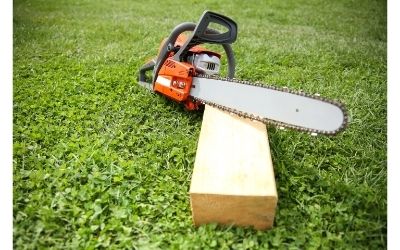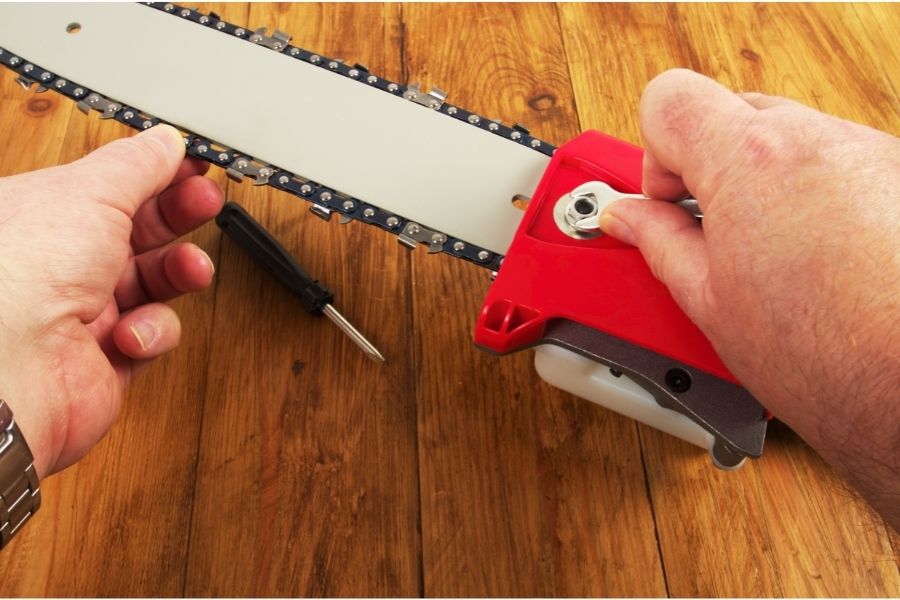 So how are chainsaw bars measured? You may be wondering this if you need to determine the size for replacement purposes.
So how are chainsaw bars measured? You may be wondering this if you need to determine the size for replacement purposes.
A Chainsaw is a powerful power machine that cuts using a set of teeth that are attached to a rotating chain. These portable tools are a must-have for any DIY who needs to maintain a yard that is full of trees. This is because they make it easier for you to prune and cut trees.
The bar on a chainsaw is the metal part that extends out from the body that the chain wraps around. However, just like all mechanical devices, sometimes the bar will have to be replaced. The good news is, there are easy ways to measure bar length.
Interested in chainsaw maintenance? You may also want to check out our guide, How to Sharpen Chainsaw Blades.
Related: How to Cut Branches From a Tall Tree
Why You Need Accurate Chainsaws Bar Measurements
Chainsaws come in various sizes and range from electrical or battery models to gas-powered models. As such, each type of chainsaw is different and depending on the model number will require a specific chainsaw bar length.
Generally, electrical chainsaws do not use blades longer than 18-inches. This limitation is caused by the power of their motors that cannot drive longer bars and chains. On the other hand, gas-powered chainsaws can have blades as long as 72 inches or even more. This is because they can be built with bigger engines that can handle the power required to drive such blades.
Keep in mind, it is best to not use these general statistics when looking for new chainsaws bars. This is because, you will need high levels of accuracy when looking for chainsaws bars. A rule you must never forget is that chainsaw blades do not stretch as each one is designed to fit a specific size bar. Therefore, if you go for one that is too wide or too short, it will not fit.
Also, if you’re getting a new bar for your chainsaw, you should measure the chain as this will help to determine the size you need.
How Are Chainsaws Bars Measured? Step by Step Guide
Method one: Manual Bar Measurement by Tape
Step One: begin by unplugging the spark plug for your safety
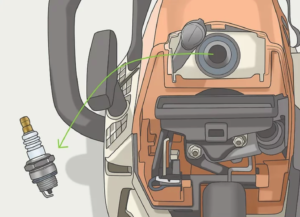
Step Two: Measure the cutting length
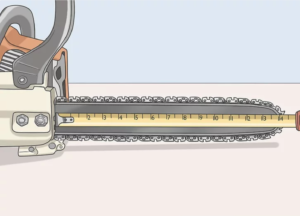
The cutting length or effective length or usable length is the measure of the chainsaw’s bar from the tip to where it enters the body. To do this, you will need to:
- Place the tape measure where the bar goes inside the chainsaw’s body.
- Extend the tape measure until it reaches the tip of the bar.
- Record the measurement and round it up to the number to the nearest even number. Your final reading should be an even number in whole inches, e.g. 35cm (13 5/8 inches) will be 14 inches.
Step Three: Remove the bar
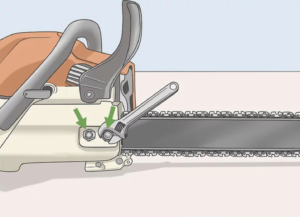
To remove the bar, you will need to remove the clutch cover off the chainsaw. This is easily done by unscrewing the nuts holding it in place. But, if you are using a chainsaw that has brakes then ensure it is in its locked position before you take the clutch cover off.
After removing the cover, move the bar forward to release it from the clutch. You can then easily pull it off the bolts.
Step Four: Measure the true length
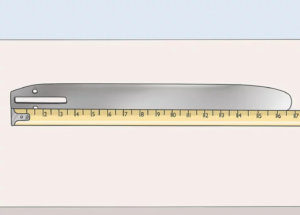
The true length refers to the entire measure of the chainsaw bar. To find this measurement, start your tape measure on one end and extend it to the other end. If you do not find a whole number, round up your readings to the nearest inch.
Step Five: Replacement of Bar
Once you have these two unique measurements, you can go shopping for the right chainsaw bar. You will need to match up these numbers to find a perfectly fitting blade.
Method two: How to Measure the Chainsaw Chain
Many at times, it takes much more than the knowledge of a chainsaw bar’s cutting length and true length to find the right fit. This is because general chain lengths do not mean they can be used on all models. There are other details required to narrow down to the right chainsaw blades. Therefore, you’ll need to know how to measure the chainsaw chain. To do this, follow these simple steps:
Step One: Remove the chain from the saw
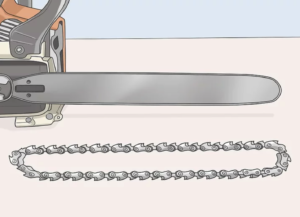
To do this, you will have to take off the clutch cover before proceeding to remove the bar. Once you have successfully removed the bar, unloop the chain from around the clutch. Always remember to wear gloves when doing this to avoid injuries.
Step Two: Measure the chain’s pitch
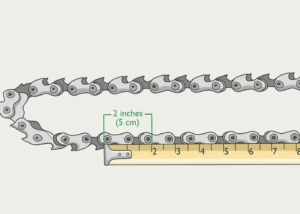
Set the chain on a flat surface and measure the length between three consecutive rivets (the circular metal pieces holding the chain links). Remember to only measure from the edge of the first rivet to the edge of the third rivet. Note down your reading and divide it by two.
E.g. a measurement of ½ inch will be divided by 2 to give you ¼ inch.
Step Three: Measure the chain’s gauge
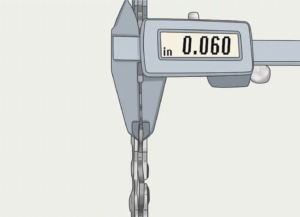
You will need a caliper to measure the thickness of the groove on the chain (the pointed metal pieces) that fits on the bar. Before taking your measurement to ensure the caliper has a tight grip on the drive link. The standard sizes include; 0.063 inches, 0.058 inches, and 0.050 inches.
Step Four: Count the drive links
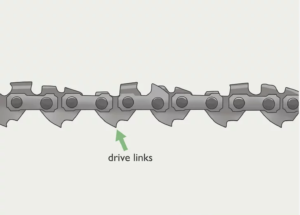
Finally, you will need to count all the drive links on the chain. The easiest way to do this is to put a mark on one of these pointed metal pieces and slowly count to the last one.
Armed with this information, you will have greater accuracy levels when shopping for a chainsaw bar. However, these numbers can be found printed on the chainsaw bar. The order of the numbers will be something like this – ¾ 72 1.5mm/.058 – meaning ¾ pitch, 72 drive links, and 0.058 gauge.
How Are Chainsaw Bars Measured – Final Tips….
-
You may be able to find the user manual for your particular saw from the manufacturers website (if you can’t find your old copy). If so, it should have the specifications for what bar length you can use.
-
Often chain measurements are printed on the right side of the saw’s bar or in the saw’s user manual
Interested in other ‘how to’ guides? check out our other posts.
How to cut branches from a tall tree
How To Sharpen Chainsaw Blades
How Does a Pneumatic Nail Gun Work
How Much Does A Woodworker Make?What is a Band Saw Used For?
Finally, after a hard day of maintaining your yard and using a chainsaw, you will need to remove all the waste created. To do this more efficiently and save on time, you should check out our article on the Most Powerful Handheld Leaf Blower.
